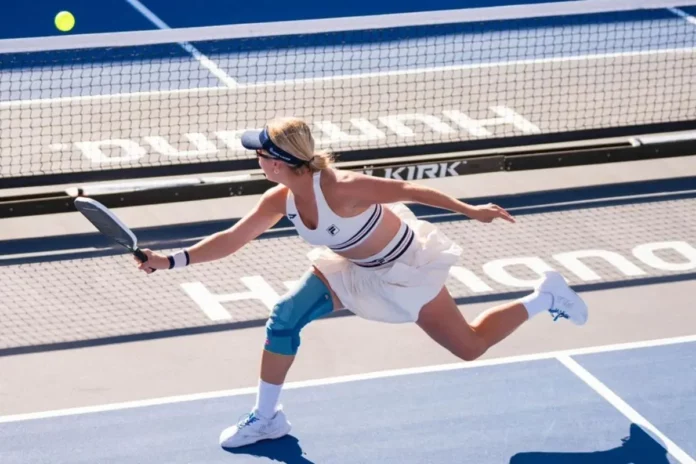The Art of Decision-Making in Pickleball: Every rally presents a critical decision of whether players should attack or reset. This choice can determine the outcome of a point. By understanding key factors like ball height, player balance, and shot quality, players can improve their performance on the court. Here’s how to make these split-second decisions effectively.
Evaluating Ball Height and Pace
When deciding whether to attack, two main factors come into play: height and pace.
Height Matters: Players should look at the ball’s height when making contact. If the ball is above net height, it’s an opportunity to attack.
Players must keep their paddle tip up and ready to strike down. For example, if an opponent sends a high dink, players should step in and aim their shot at their feet or a gap.
Pace Considerations: The speed of the incoming ball also affects the decision. A fastball can be advantageous if players are balanced and prepared to counterattack. They should keep their swings compact and controlled.
Conversely, if the pace overwhelms them, resetting is the better option. “The Karma Rule” suggests that hard shots often return hard, while soft dinks can slow the game down.
Importance of Balance and Body Position
Body position is crucial in deciding whether to attack. Players should assess their balance and stance.
Balanced for Attack: Players should ask themselves if they are moving forward with their pickleball paddle ready. If the answer is yes, they should attack. Forward momentum creates natural power.
Off-Balance Scenarios: If players are off balance, outstretched, or scrambling, they should reset. Using the “Three O’s” reset rule, players should softly place the ball into the kitchen if they are off balance, outstretched, or off-court. For instance, if lunging for a fast shot, it’s wise to reset rather than risk an attack.
Analyzing Shots in Pickleball
Quickly assessing the quality of their shot and the opponent’s response is vital for players.
Assessing Shot Quality: Players should consider whether their third shot was effective. If it’s mediocre, they should stay in the transition zone and reset. A good drop shot warrants an aggressive approach, while a bad drop shot means holding their ground.
Observing Opponent’s Body Language: Players can gain insights from their opponent’s paddle and posture. If an opponent’s grip is loose and the paddle is low, they might be resetting. A paddle in a ready position suggests they are preparing to counter.
Mastering the Reset in Pickleball
Resetting the ball is a strategic choice, not a sign of giving up. It helps players regain control.
Reset Techniques: When resetting, players should aim low into the kitchen, keeping their paddle loose to absorb the ball’s pace. “A tight grip will send it flying,” emphasizes an expert. Players should also stay compact, avoid large swings, and use their legs for better balance.
Drills for Improvement: Practicing resets in the transition zone can enhance a player’s skills. Drills with a partner, who sends hard shots at their feet, help them learn to soften the ball back into the kitchen.
By understanding when to attack or reset, players can enhance their game and maintain control during rallies. Recognizing key factors and employing strategic resets can lead to greater success on the pickleball court.

